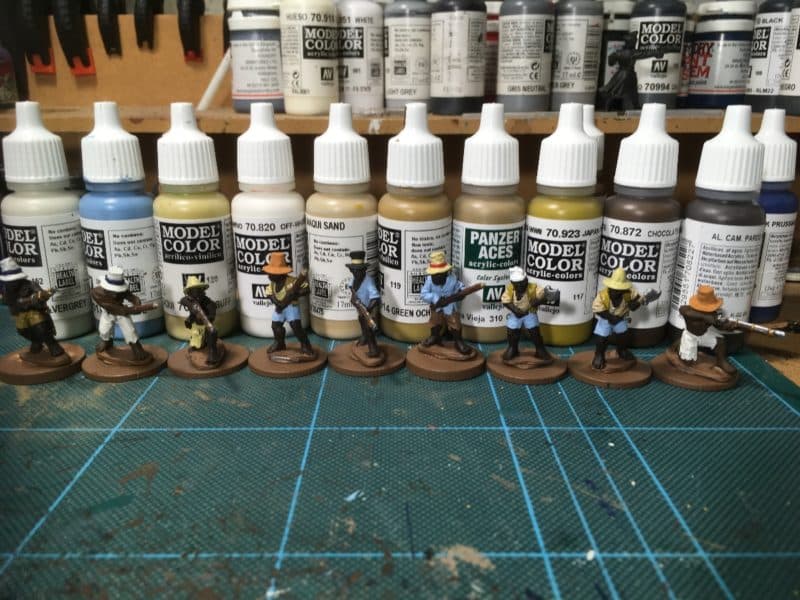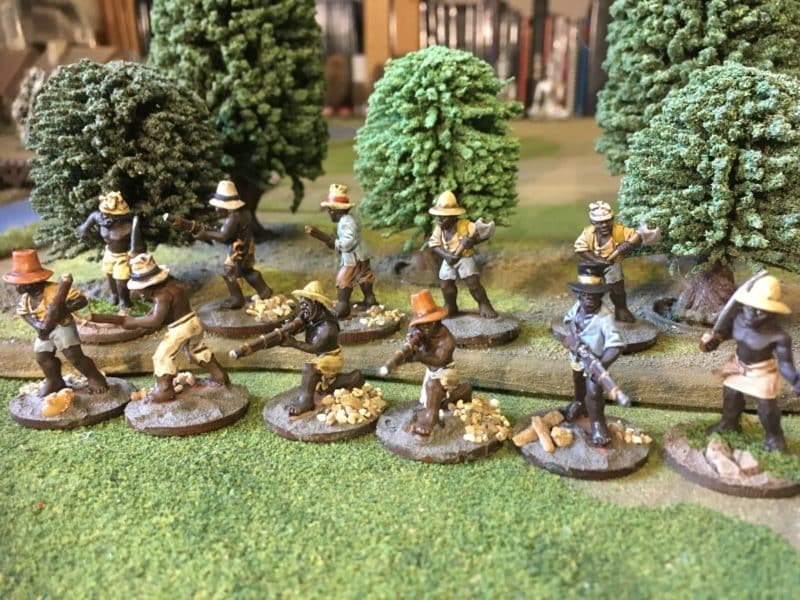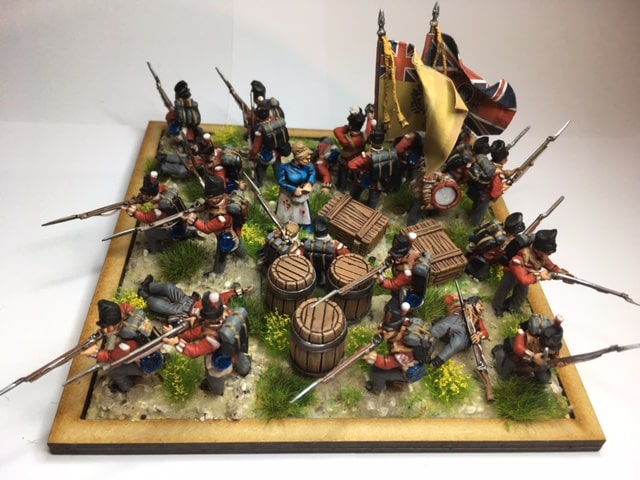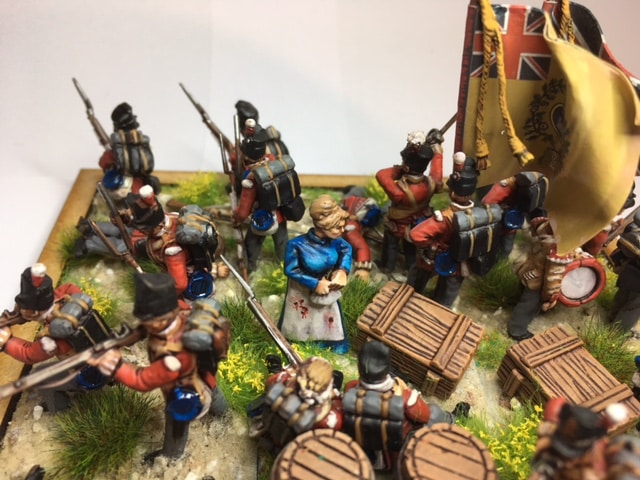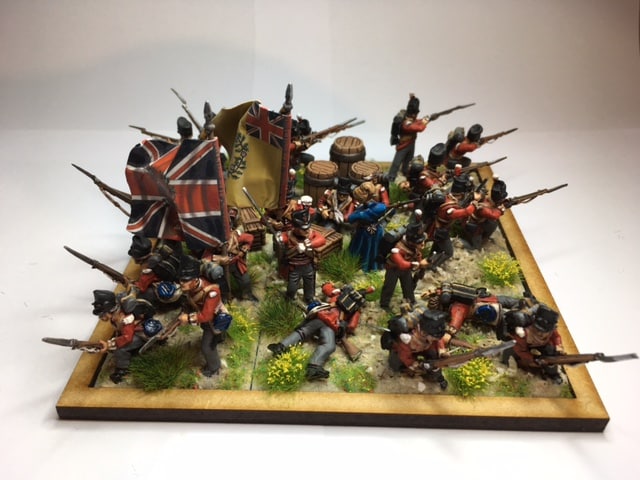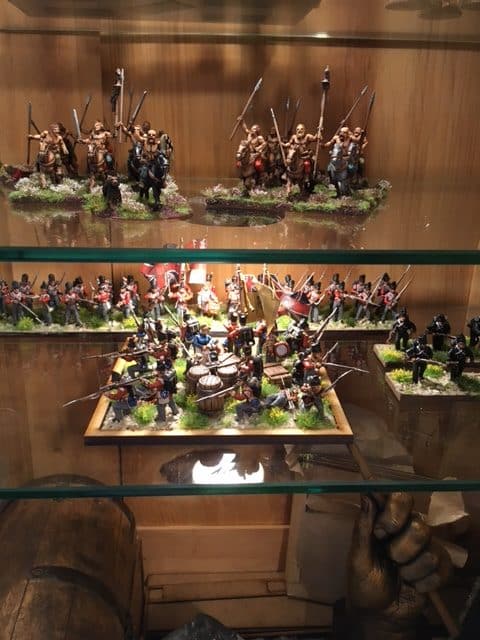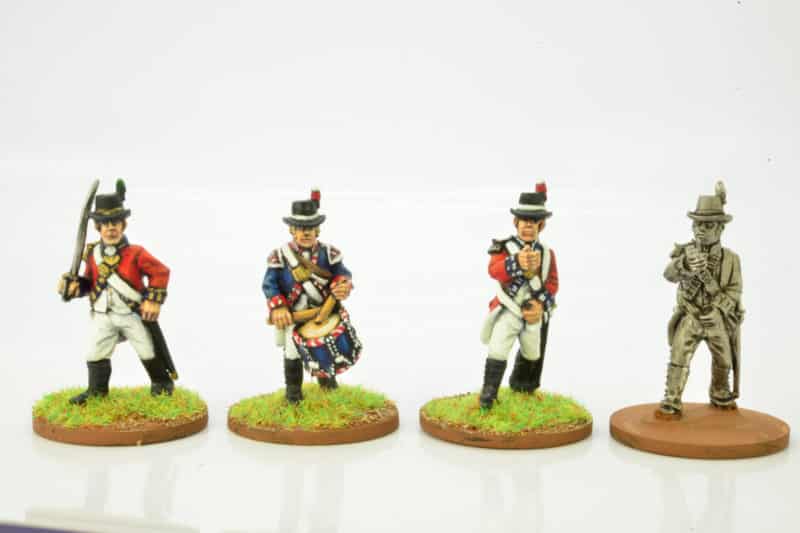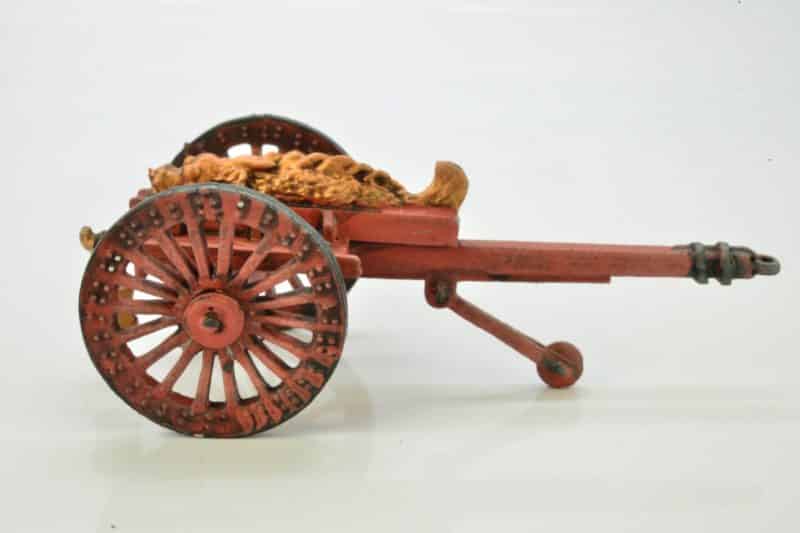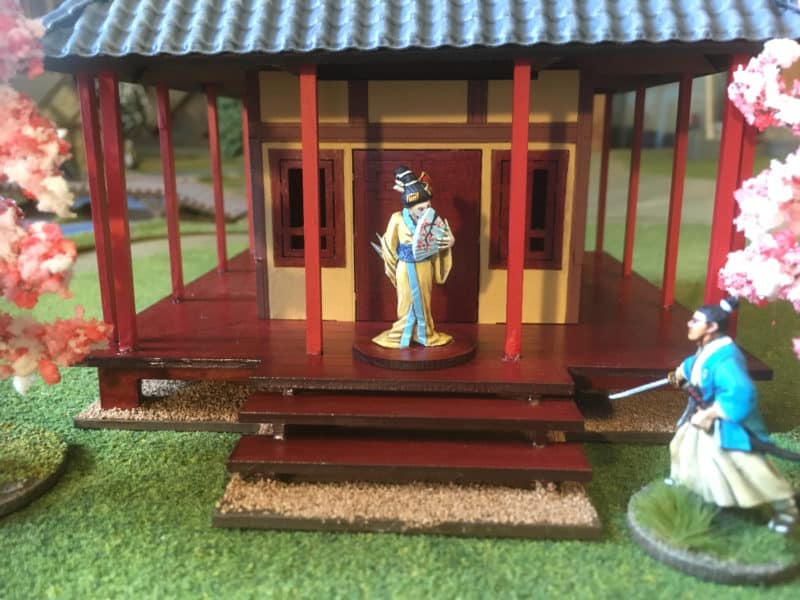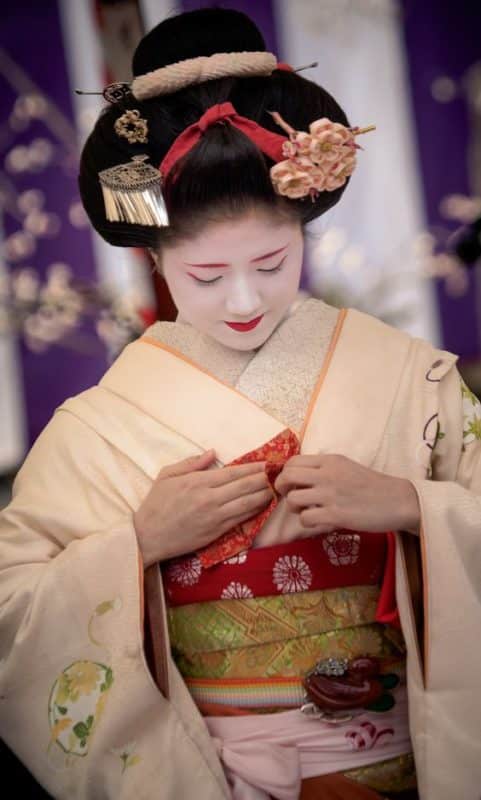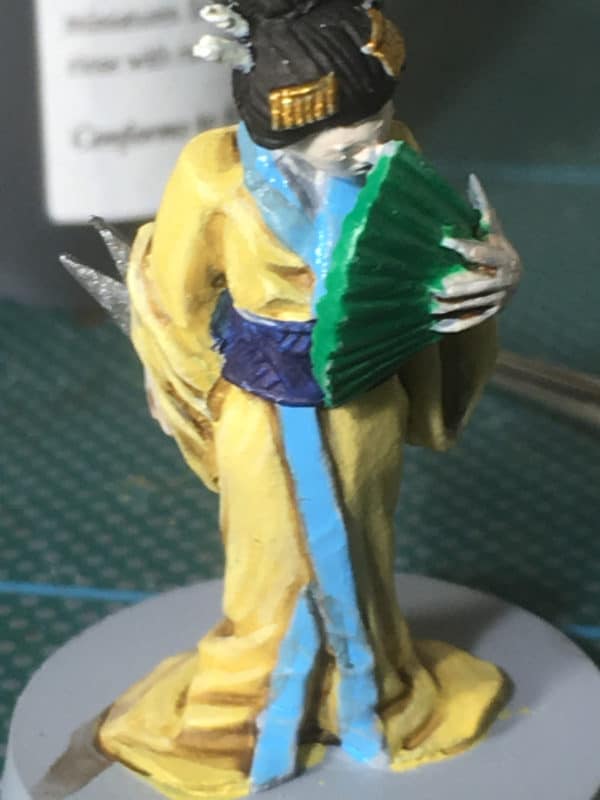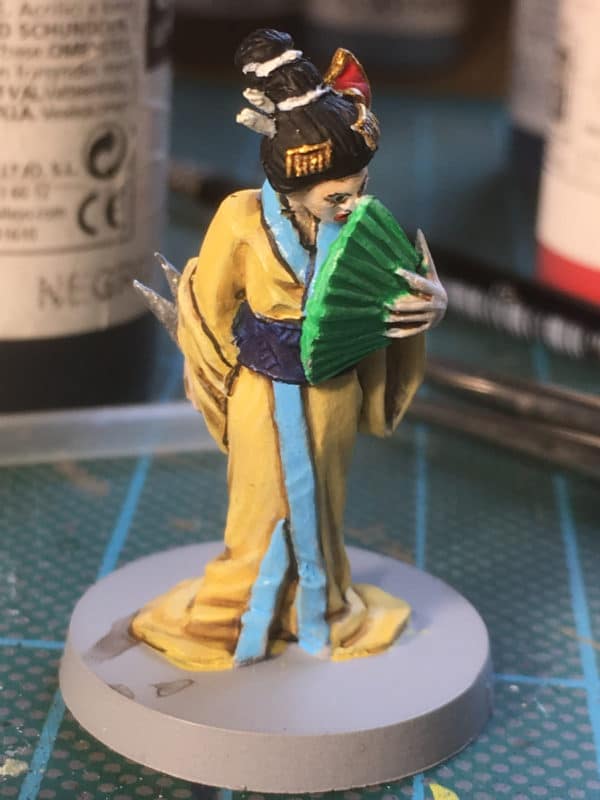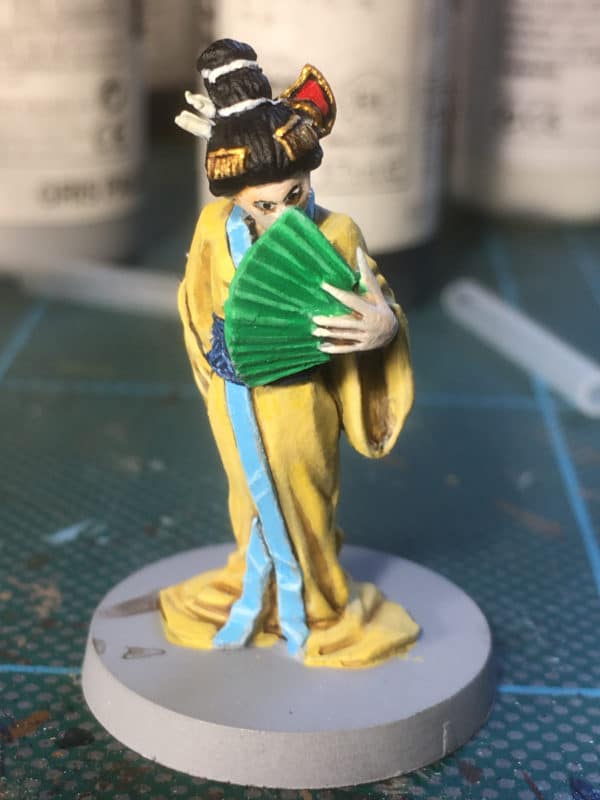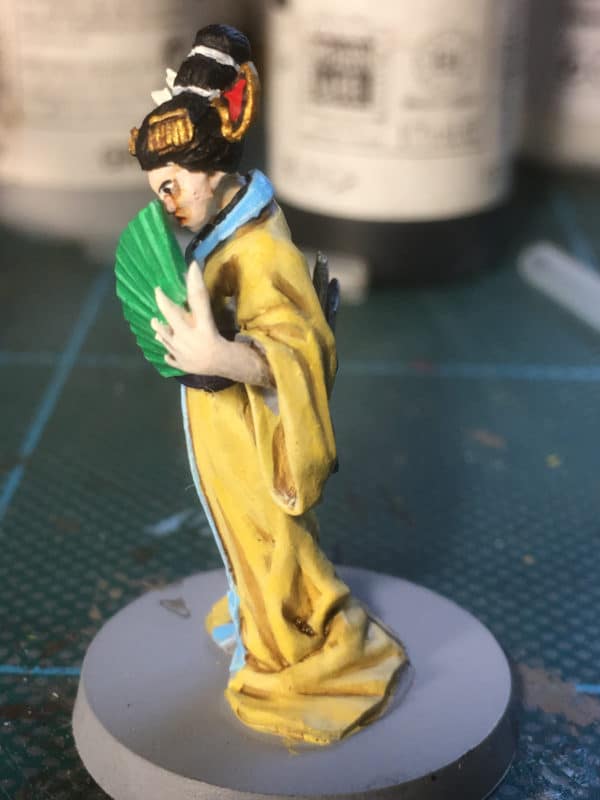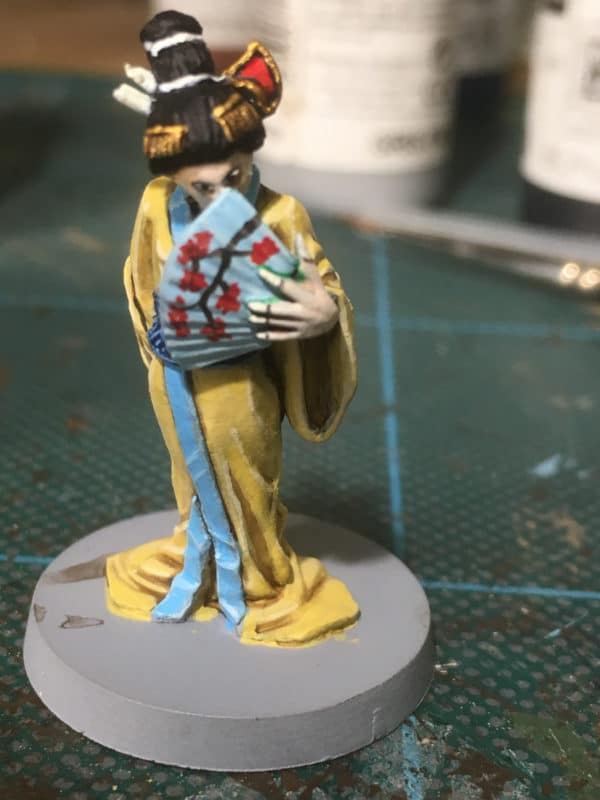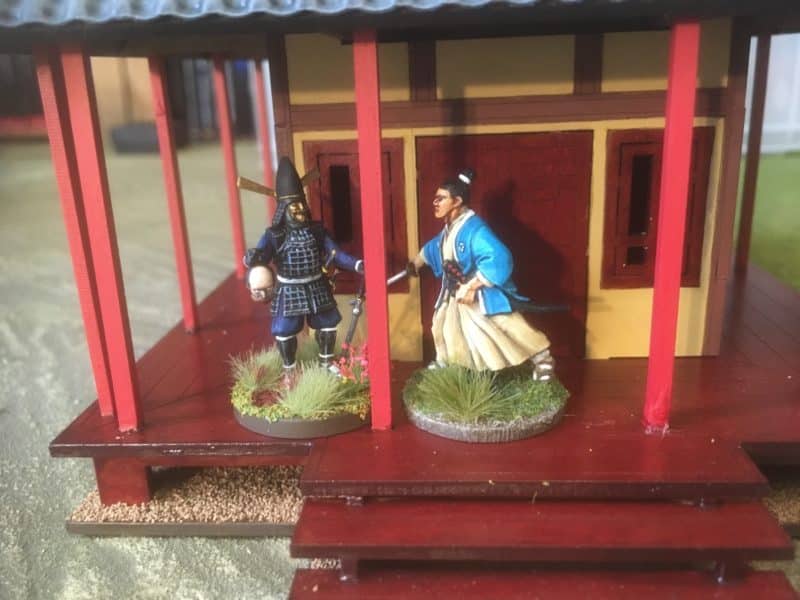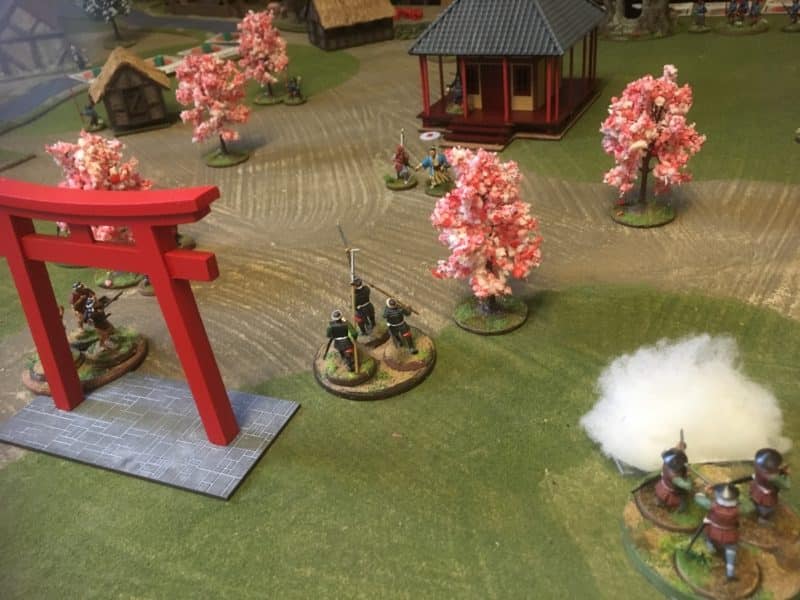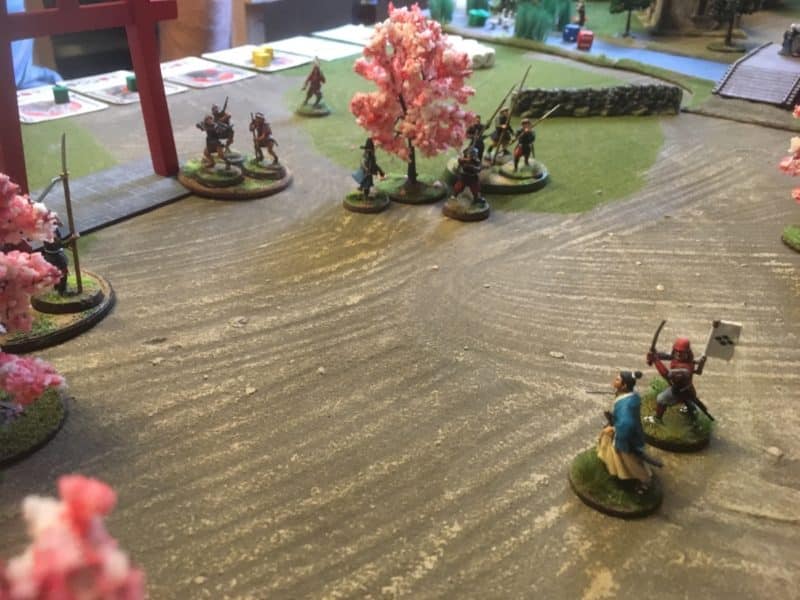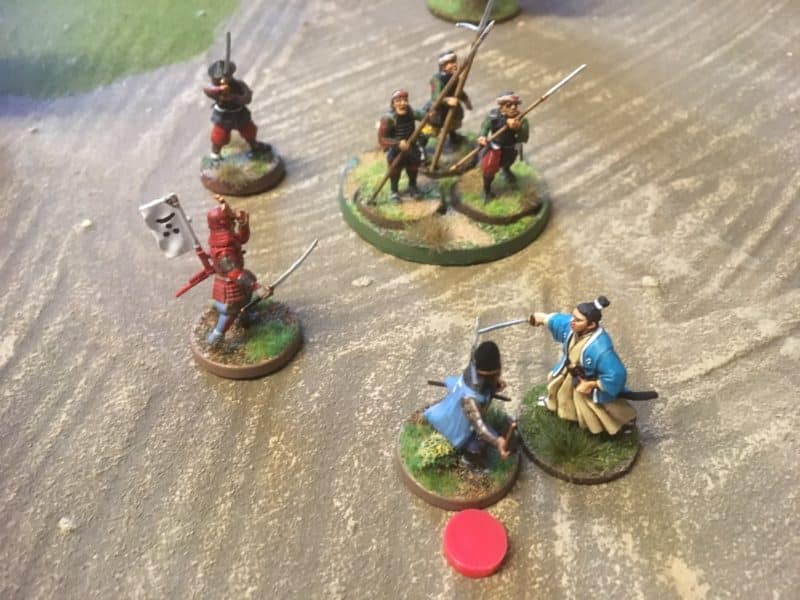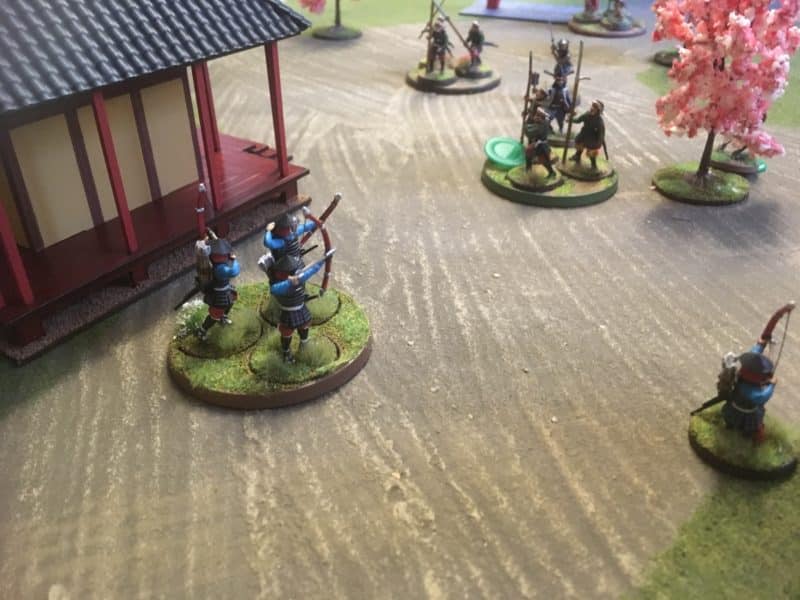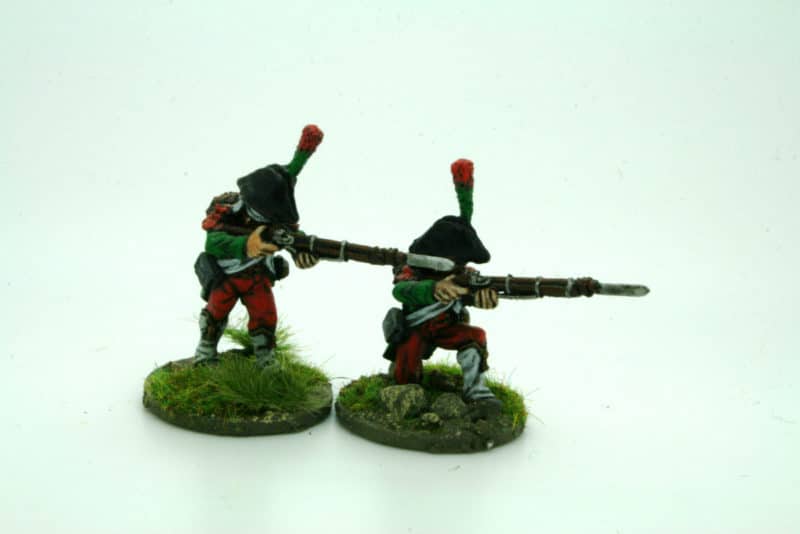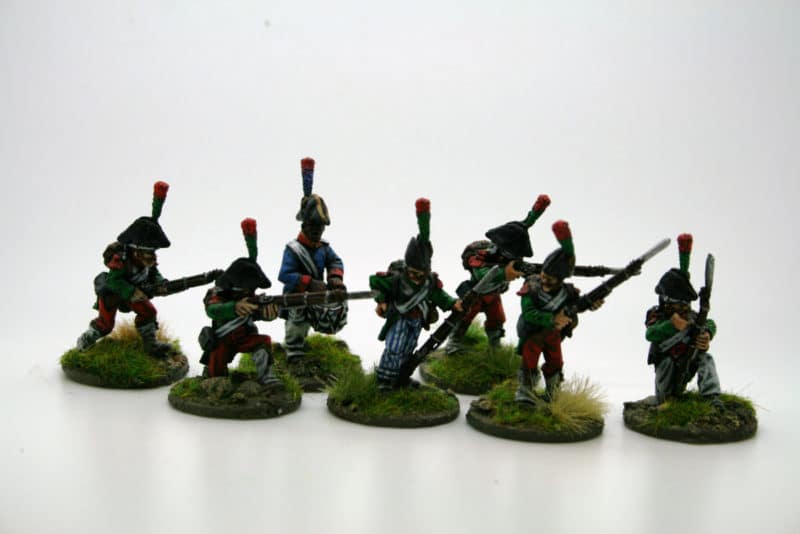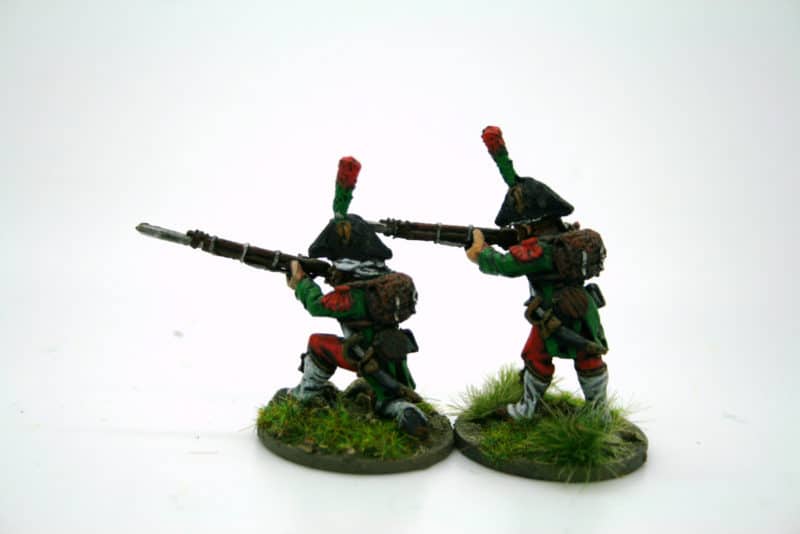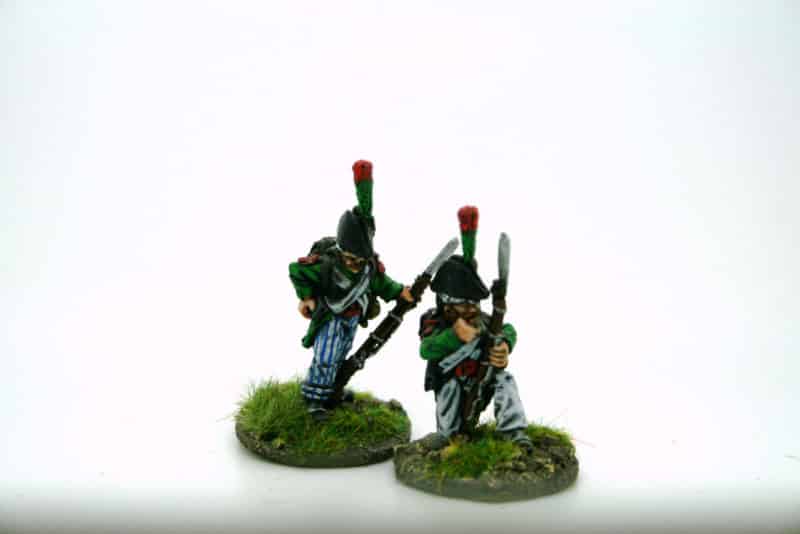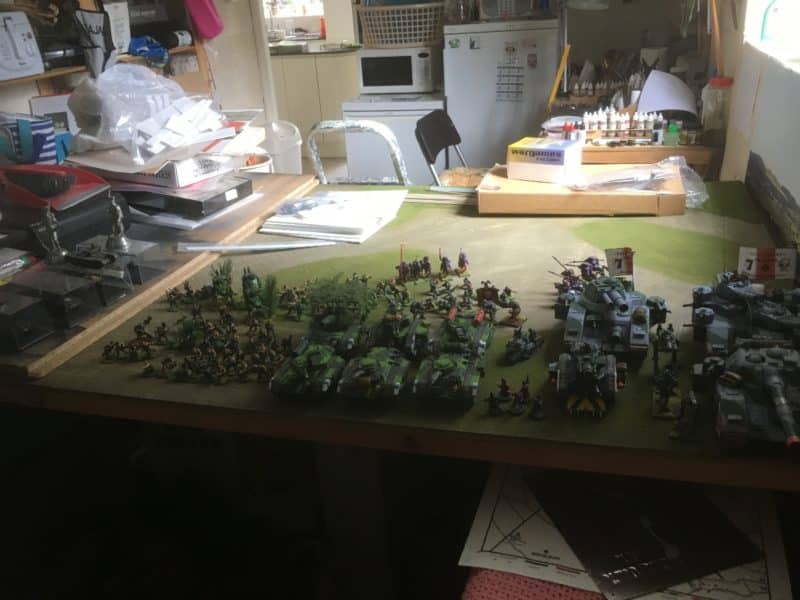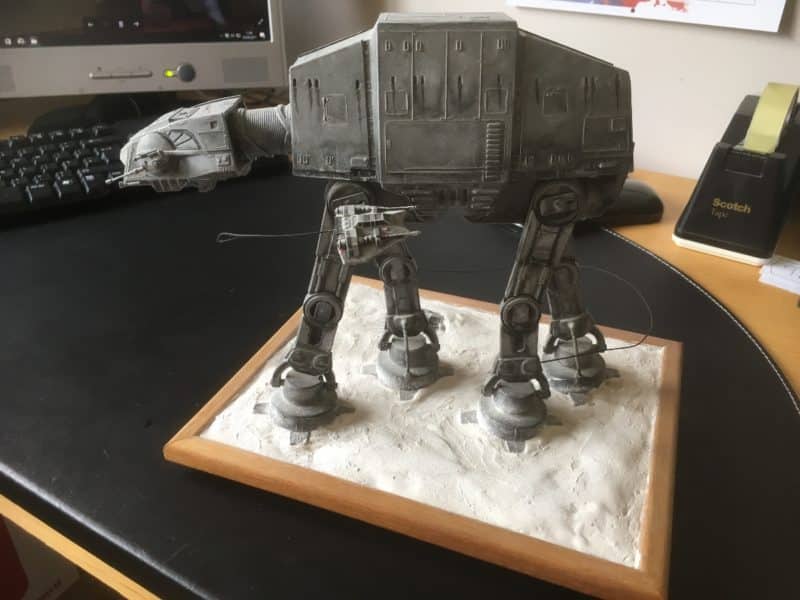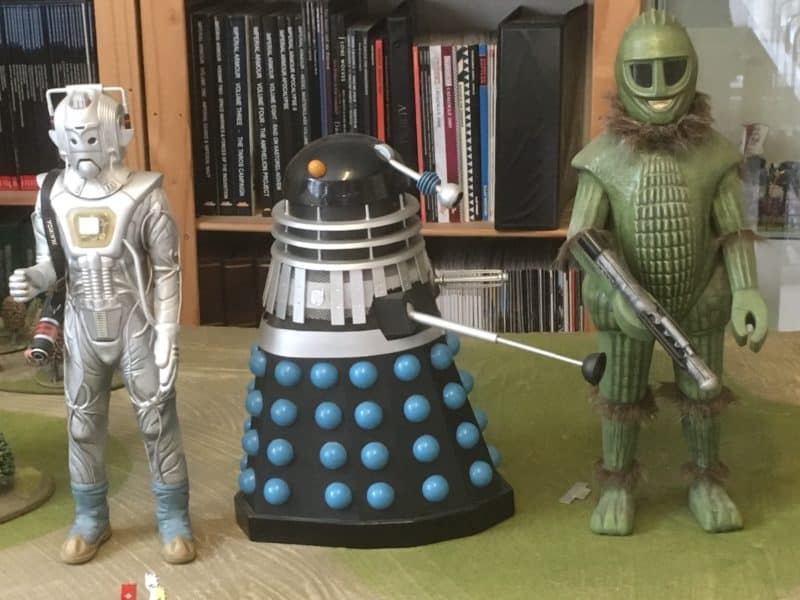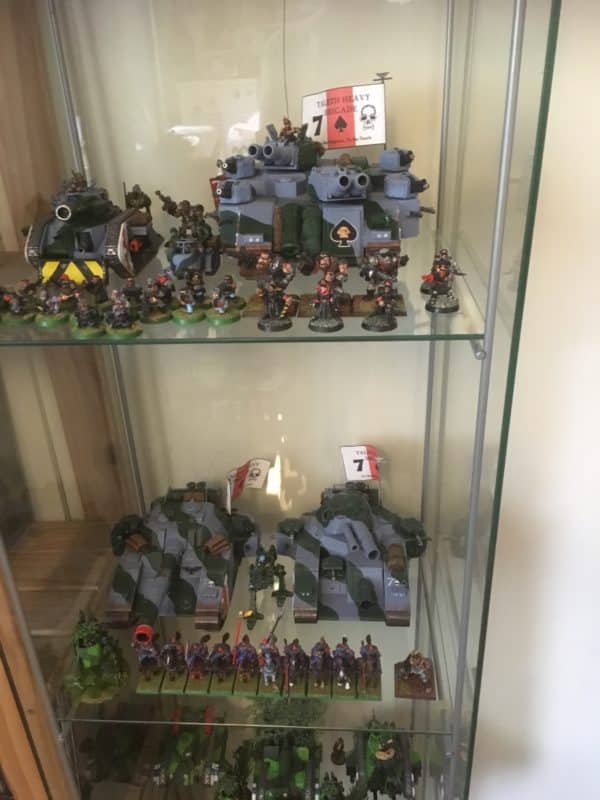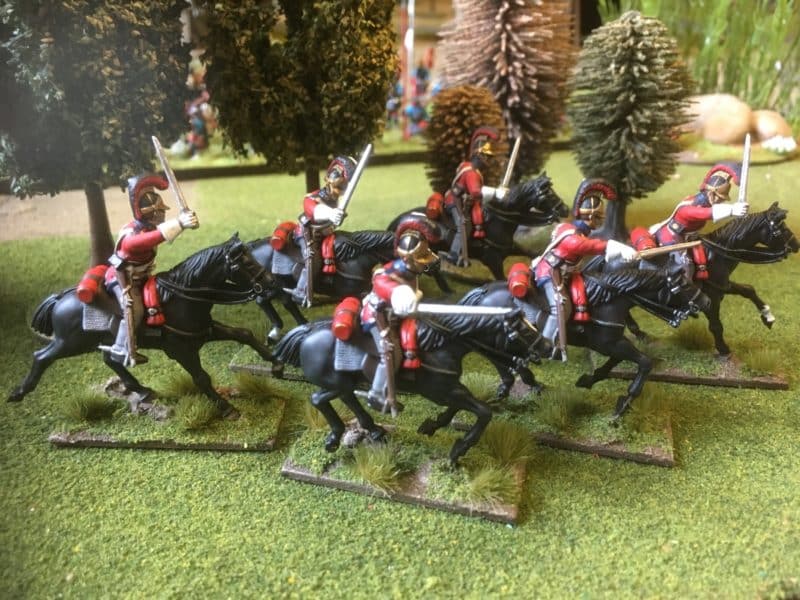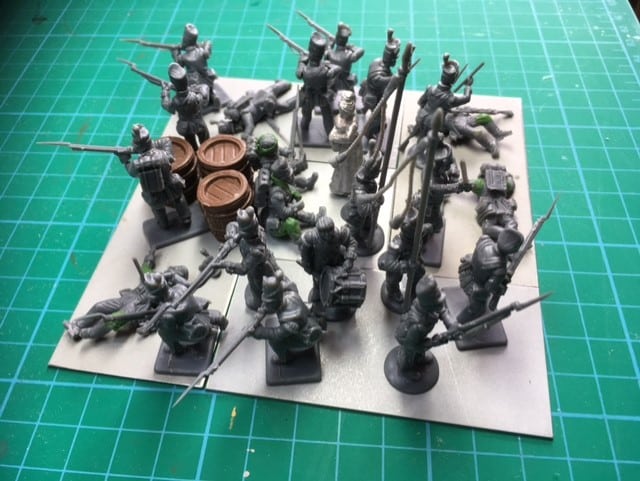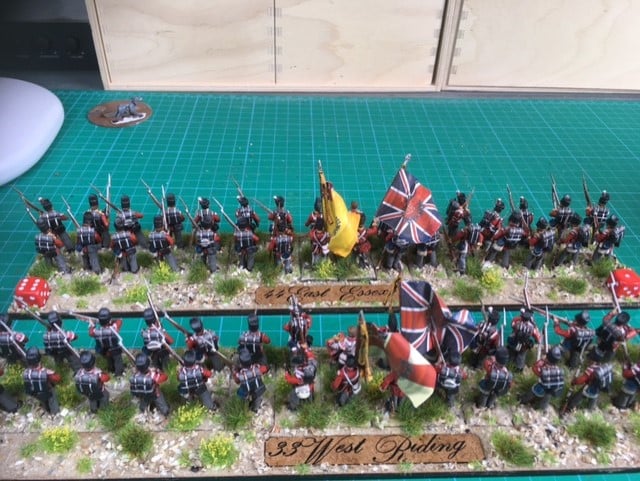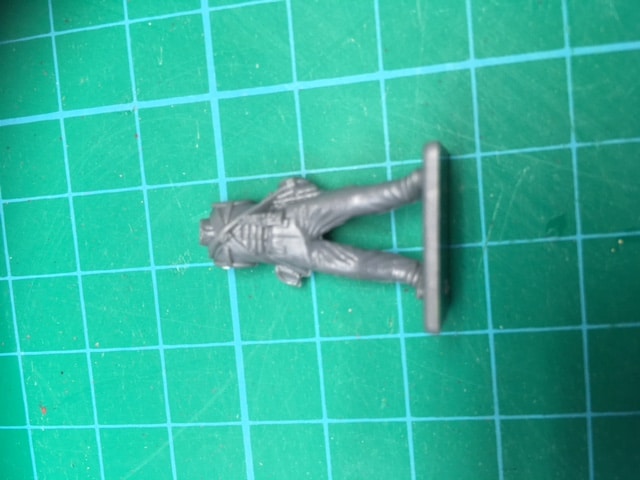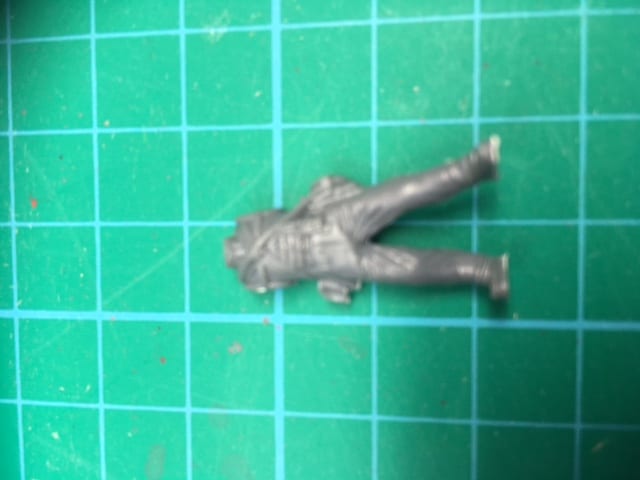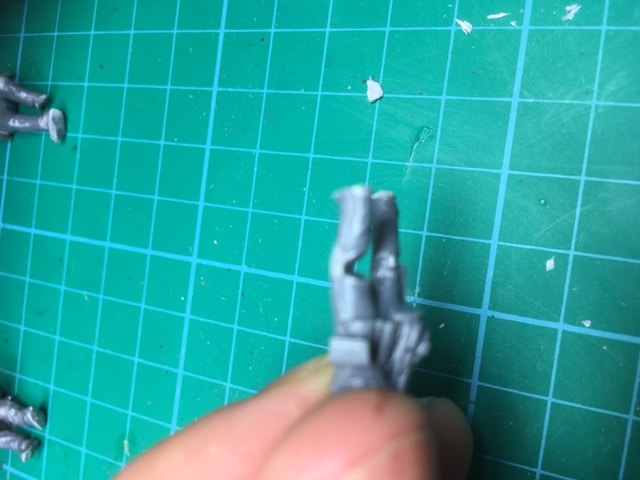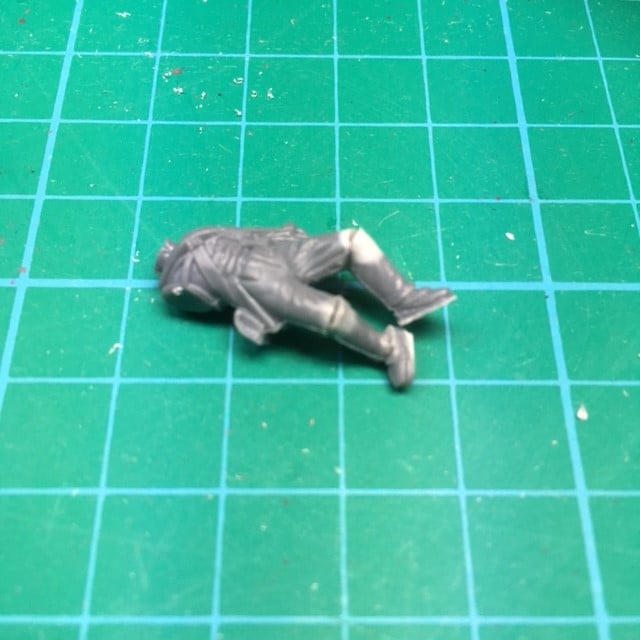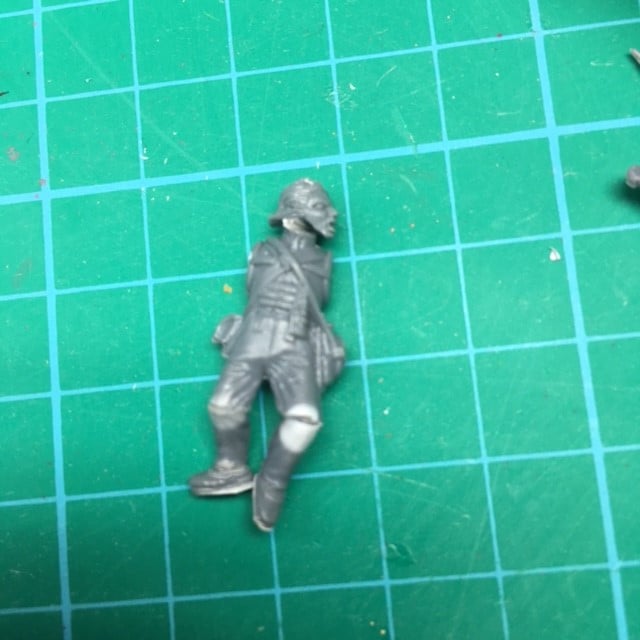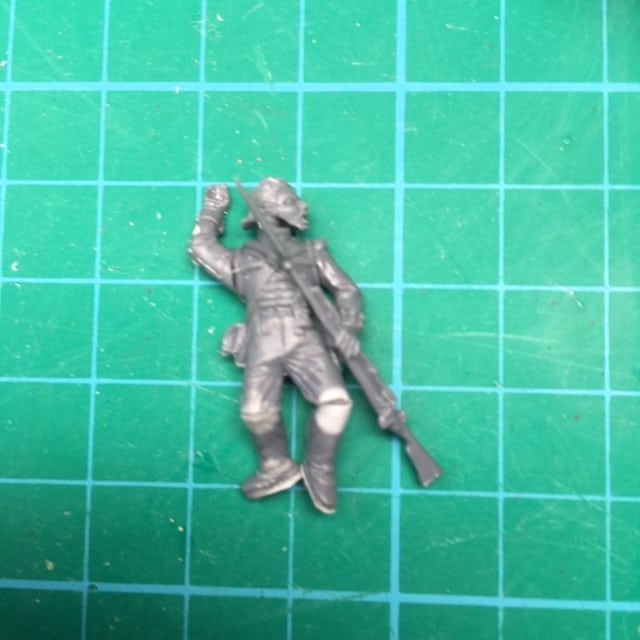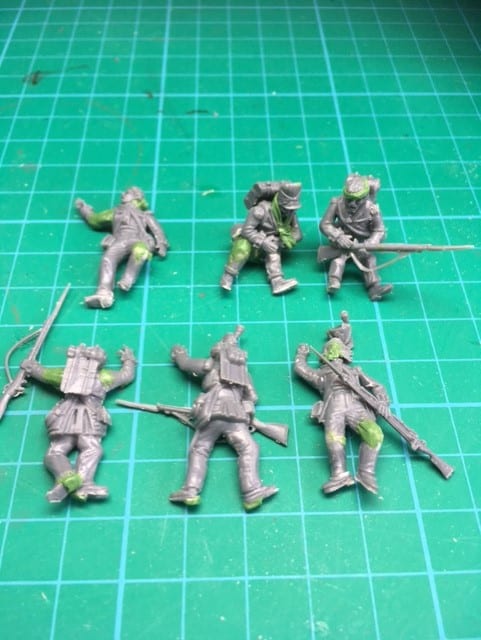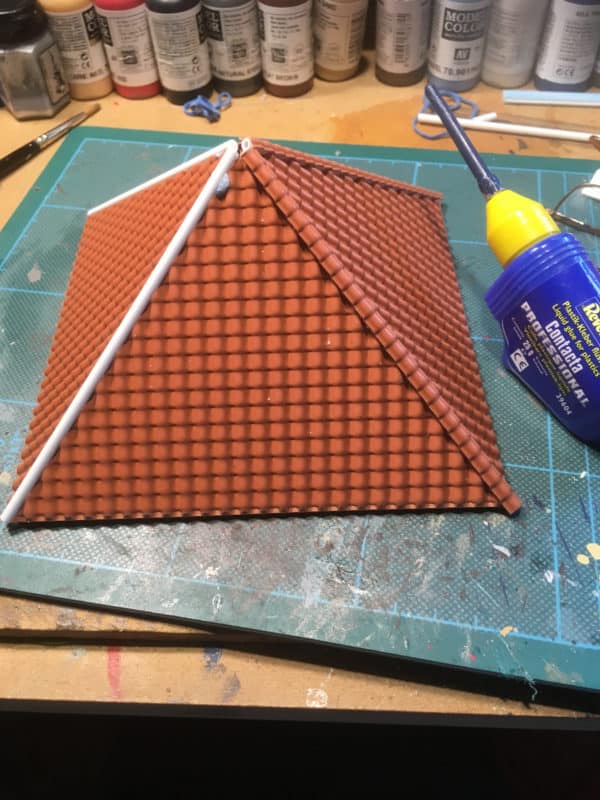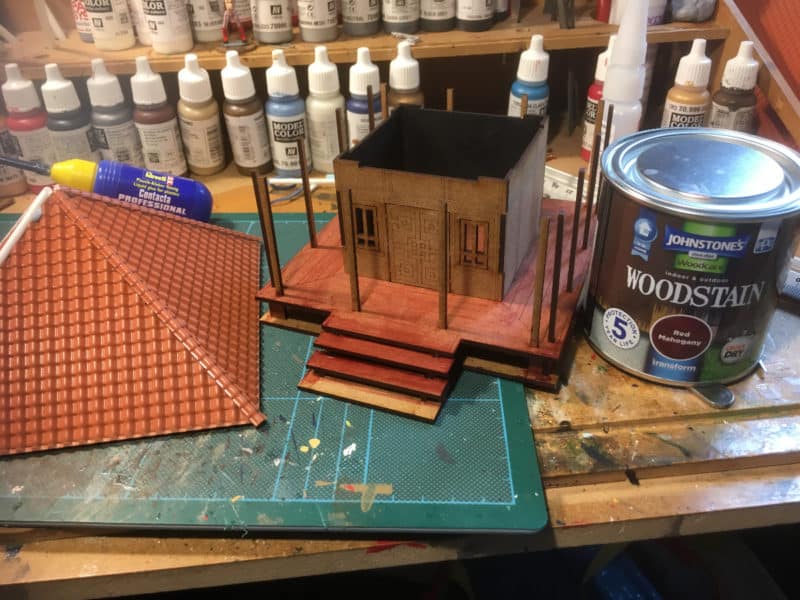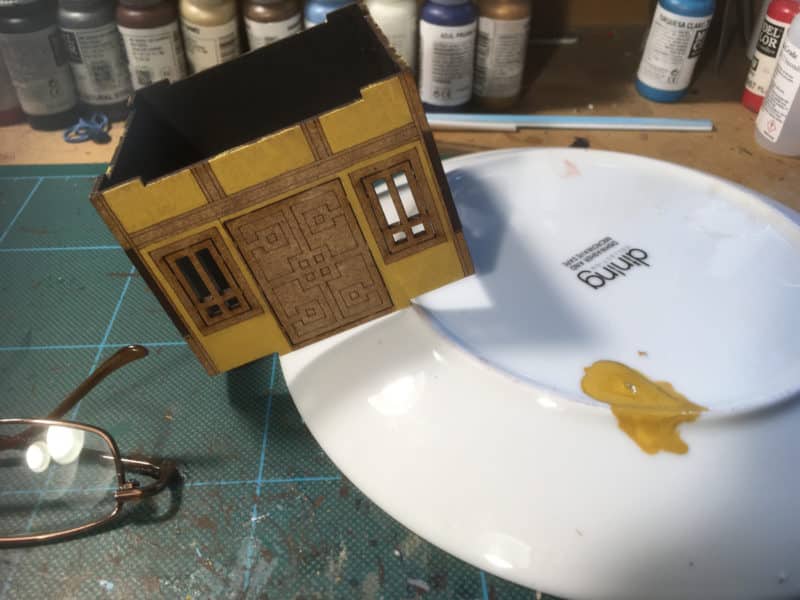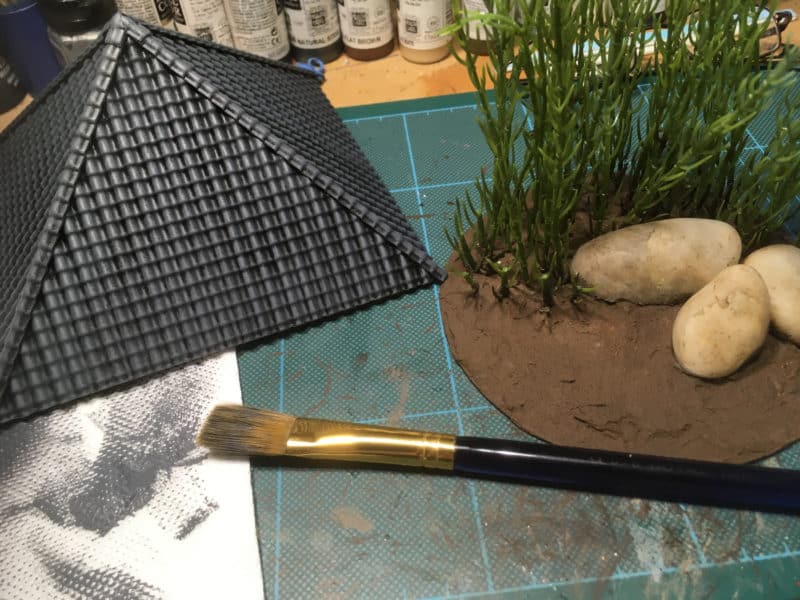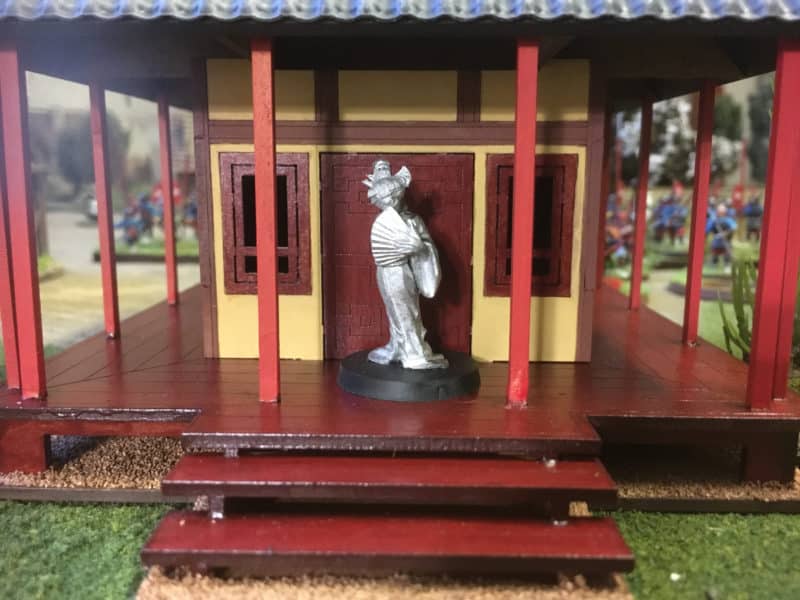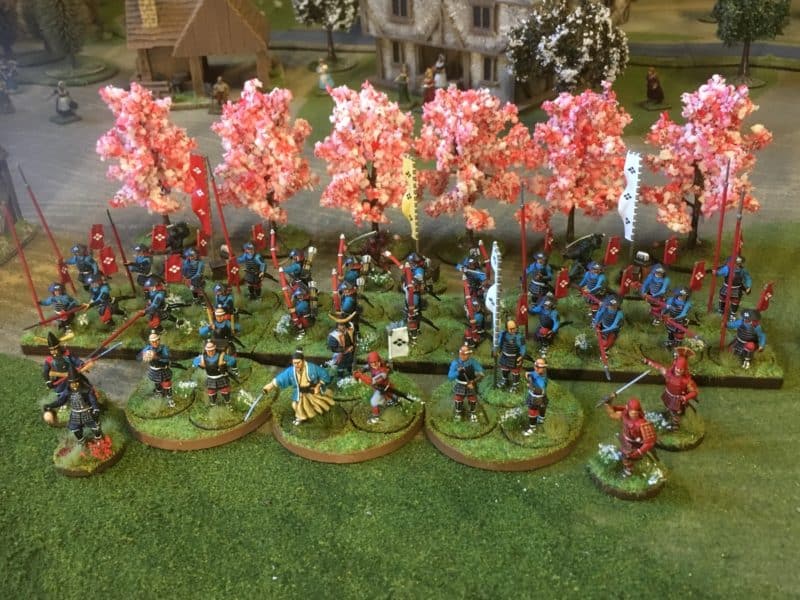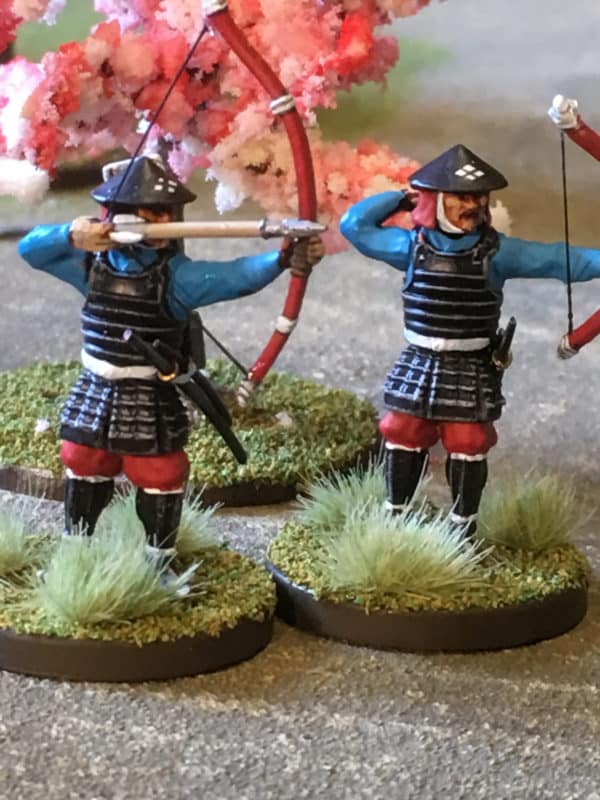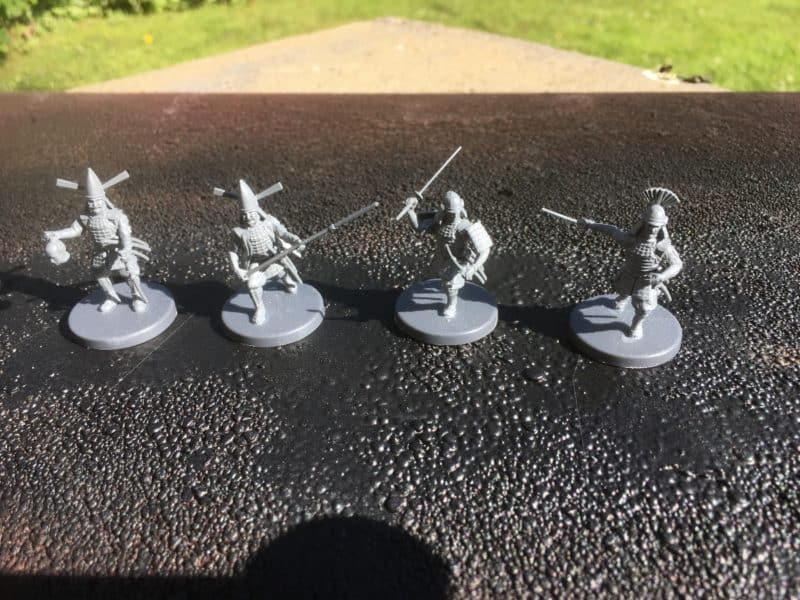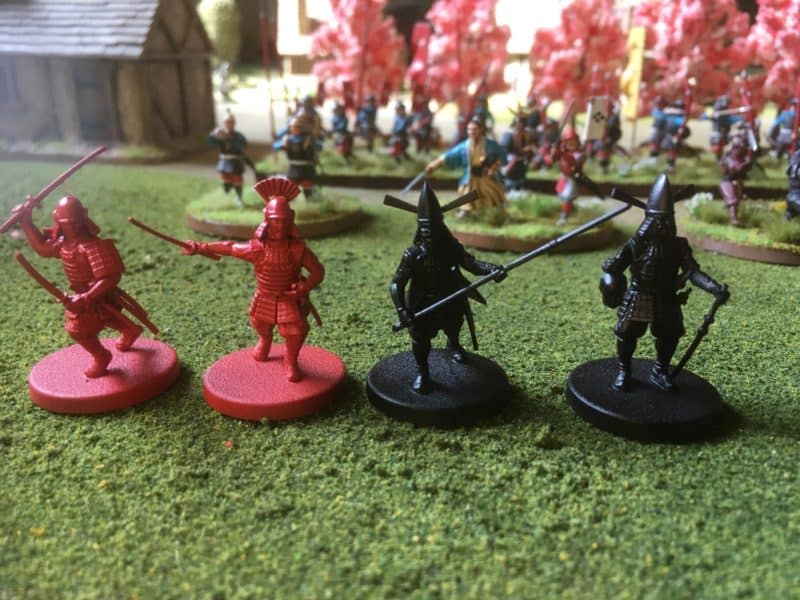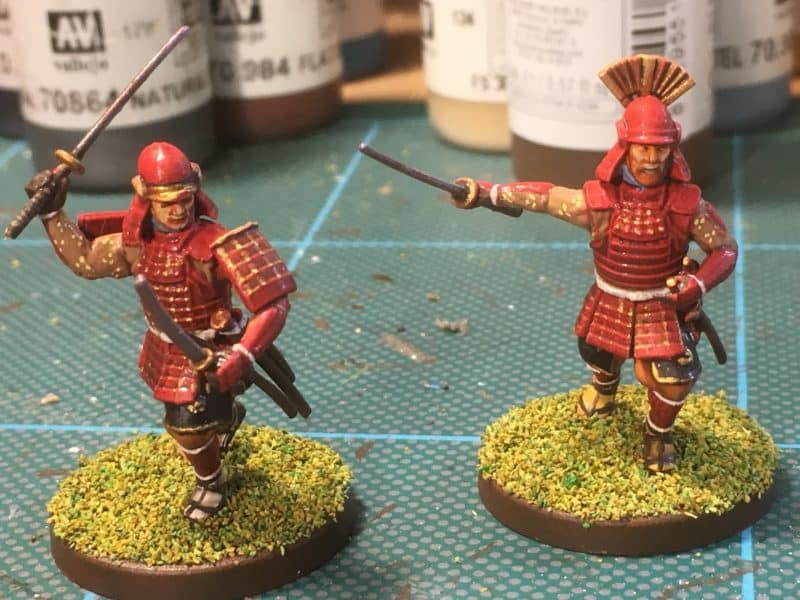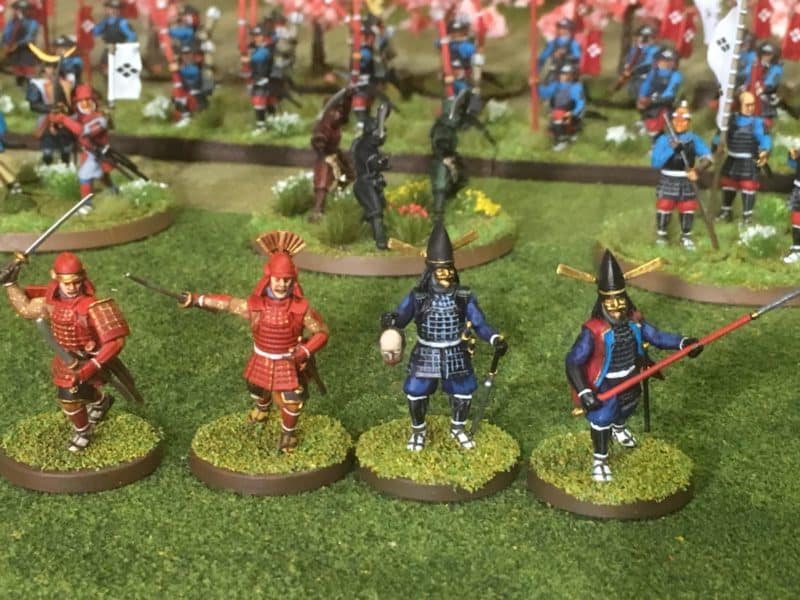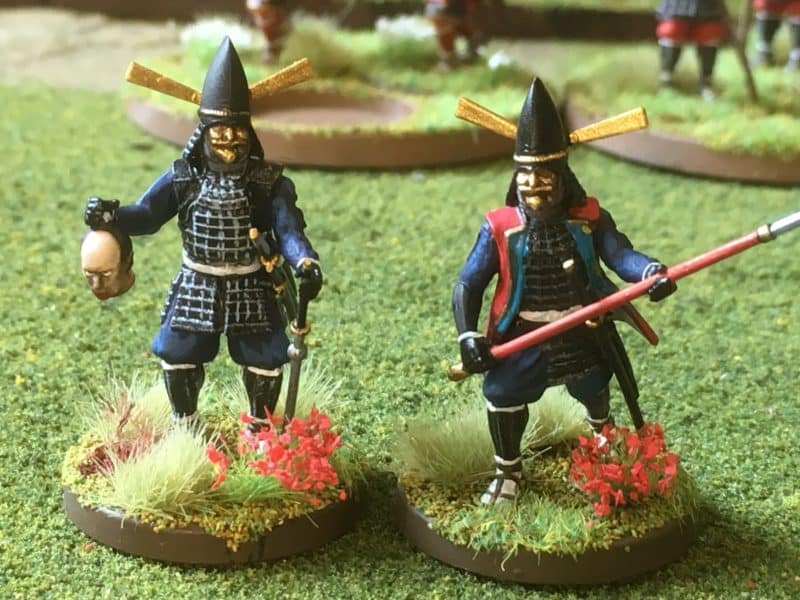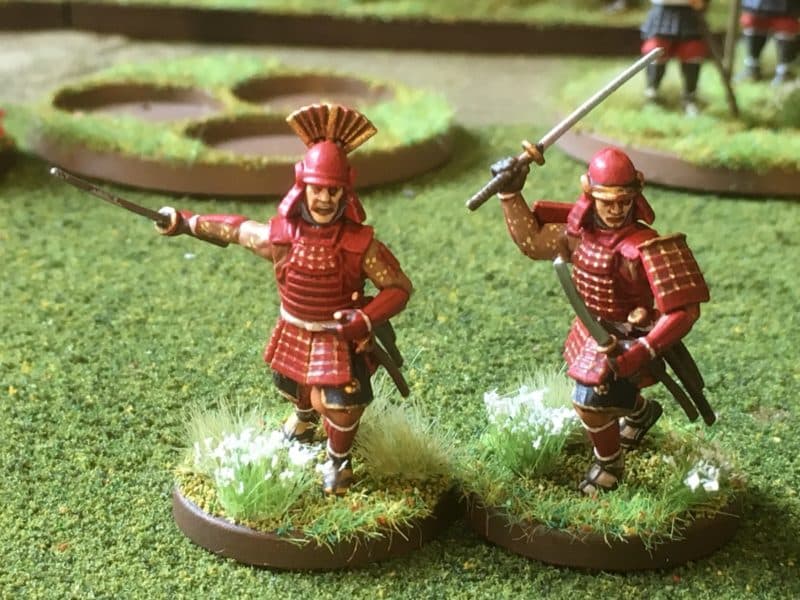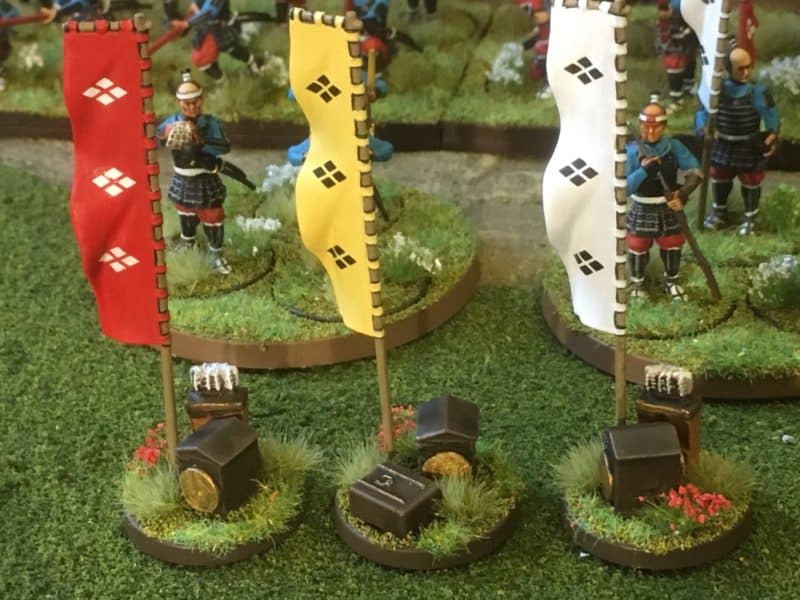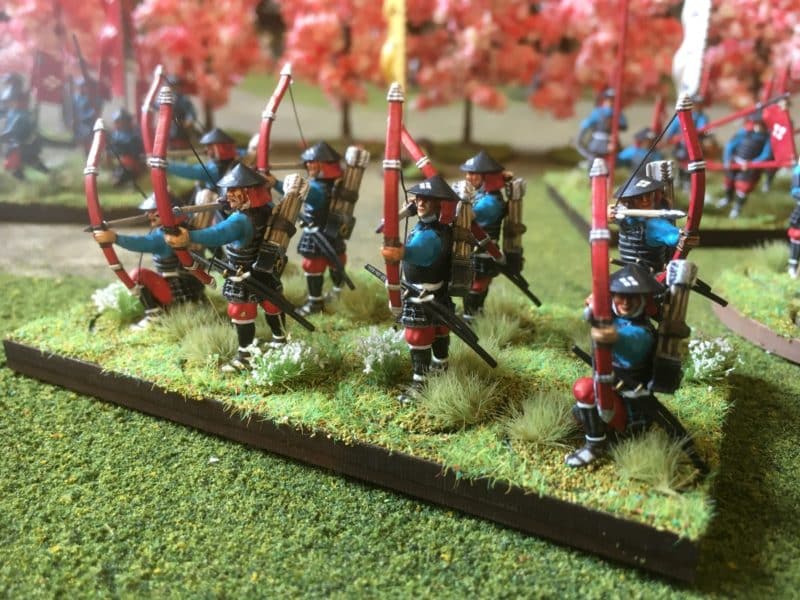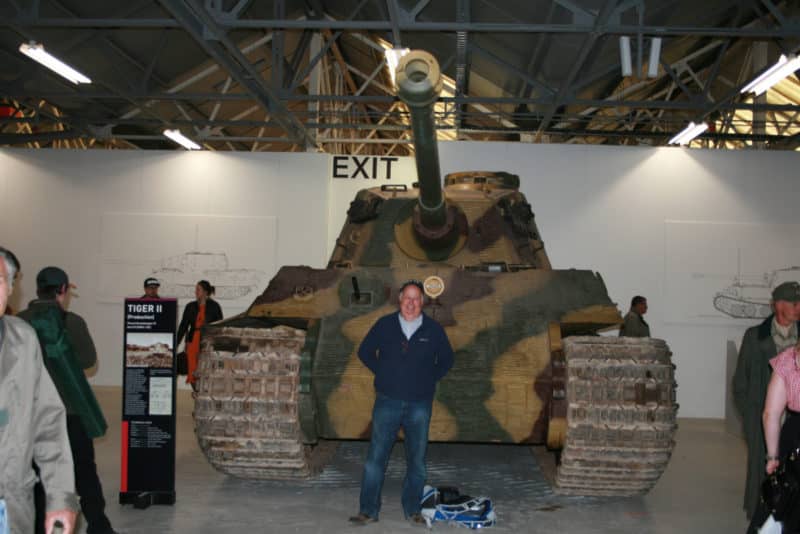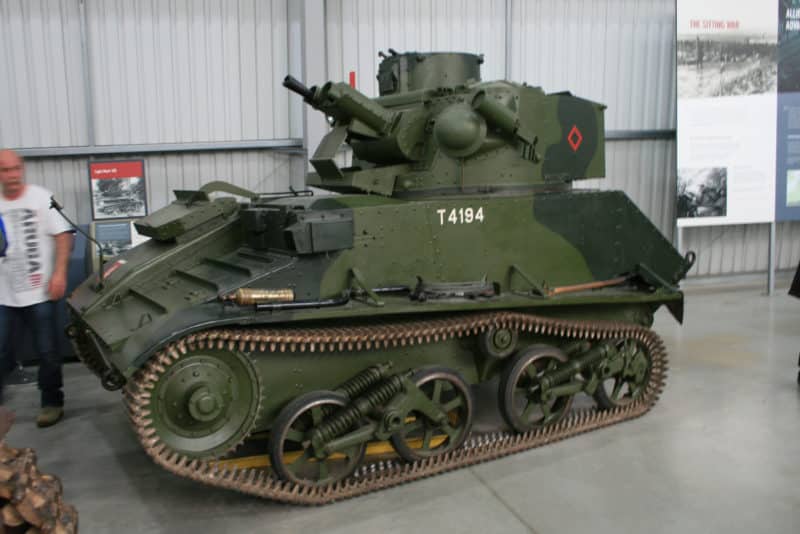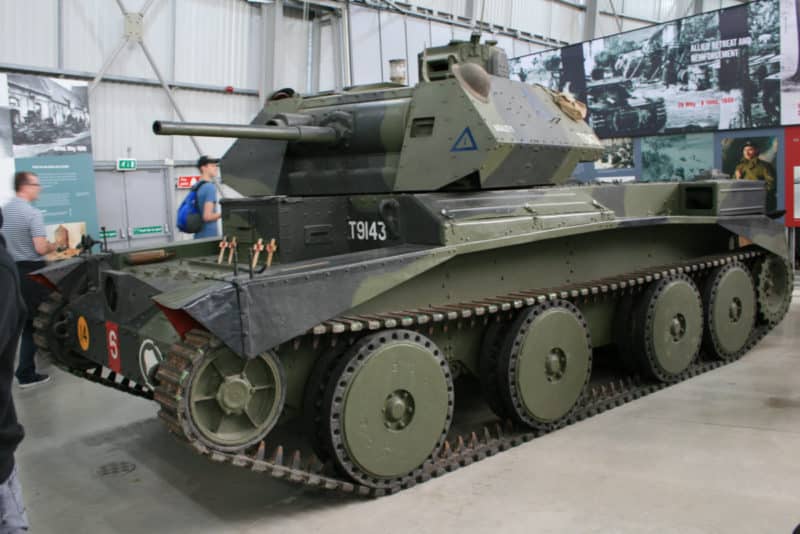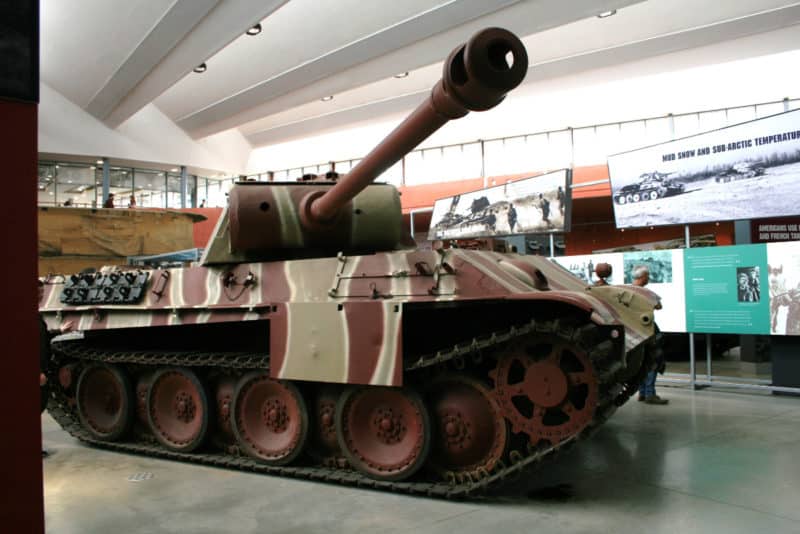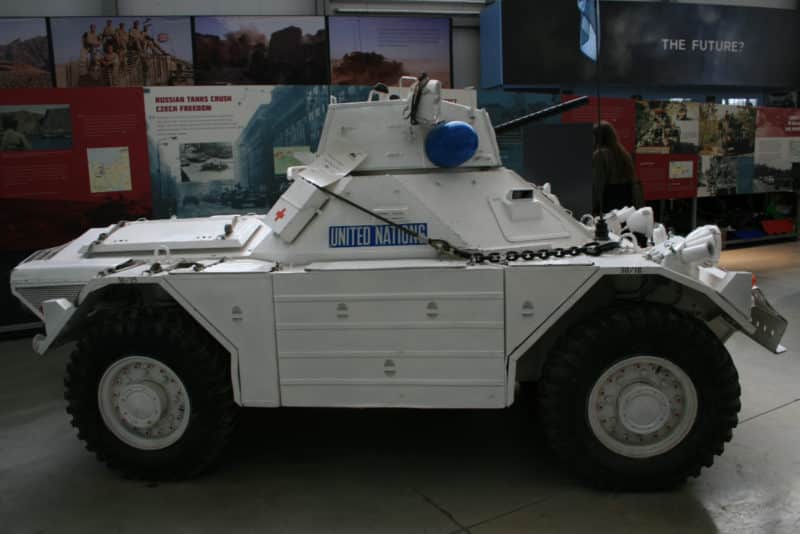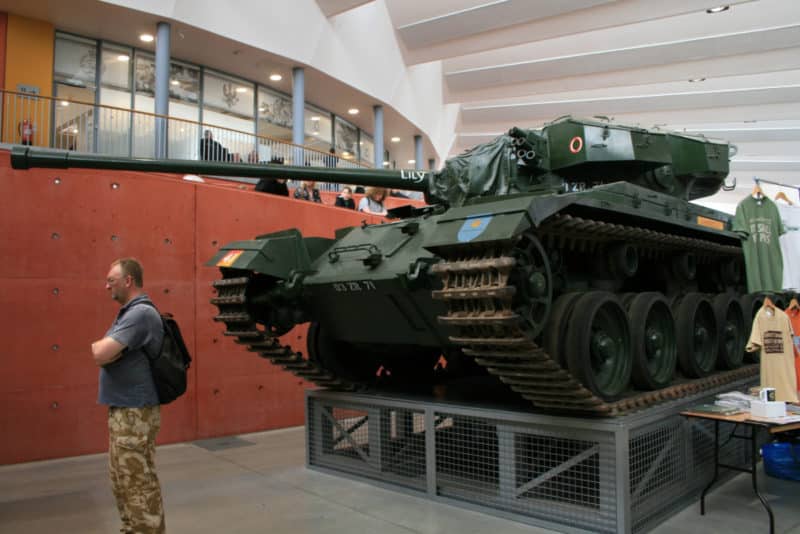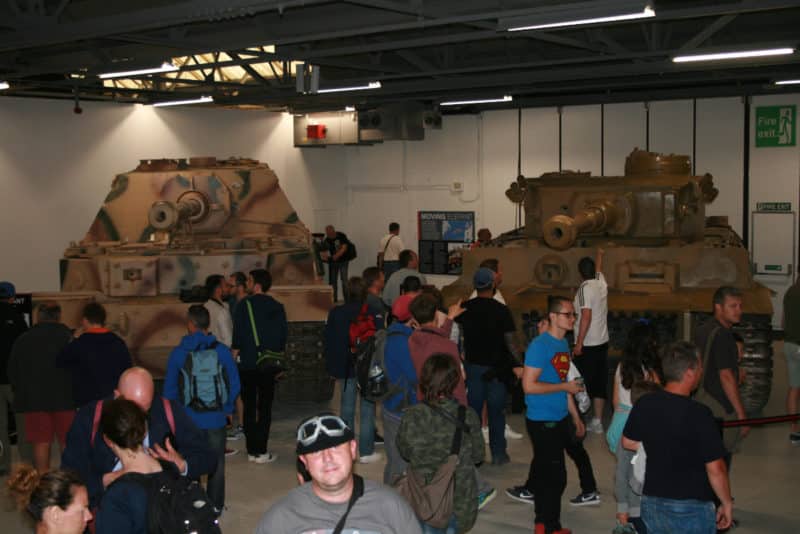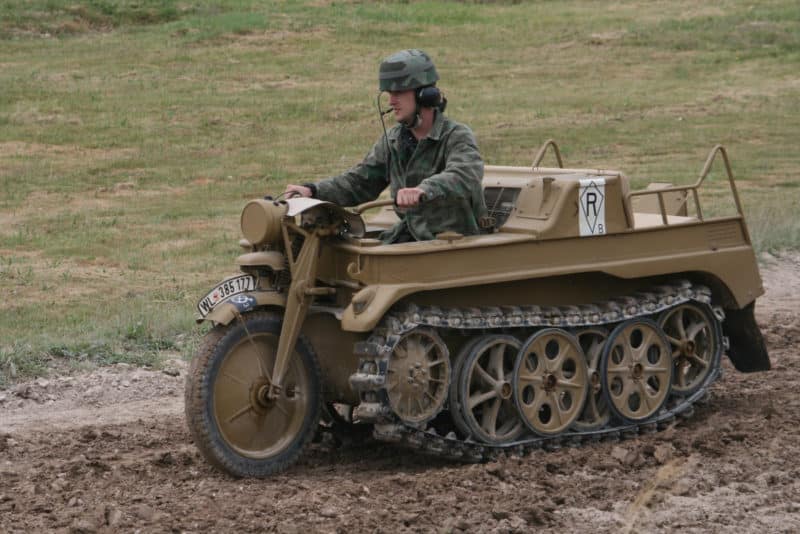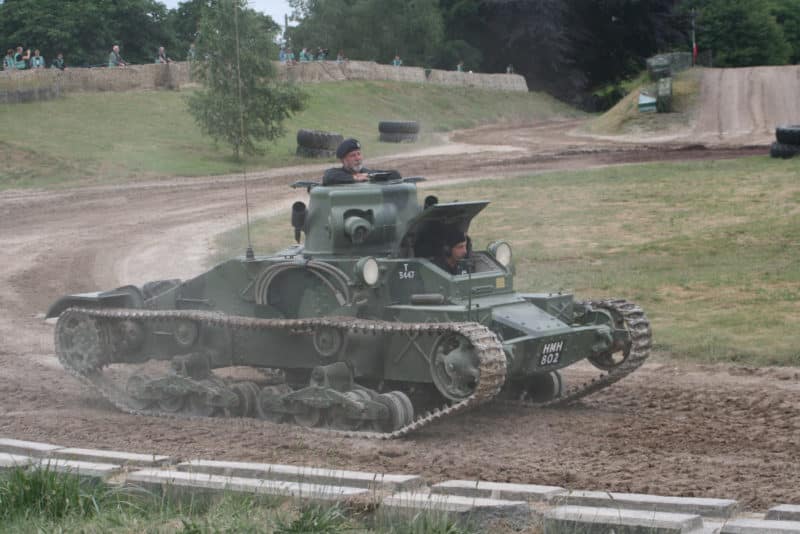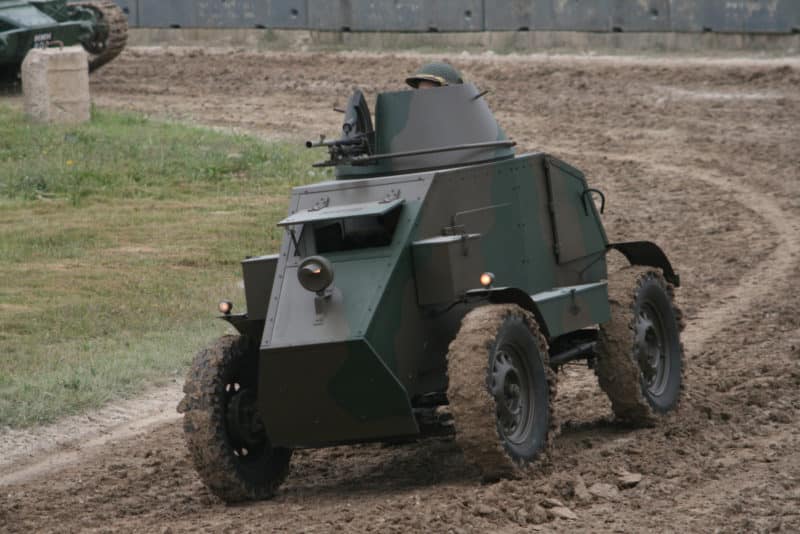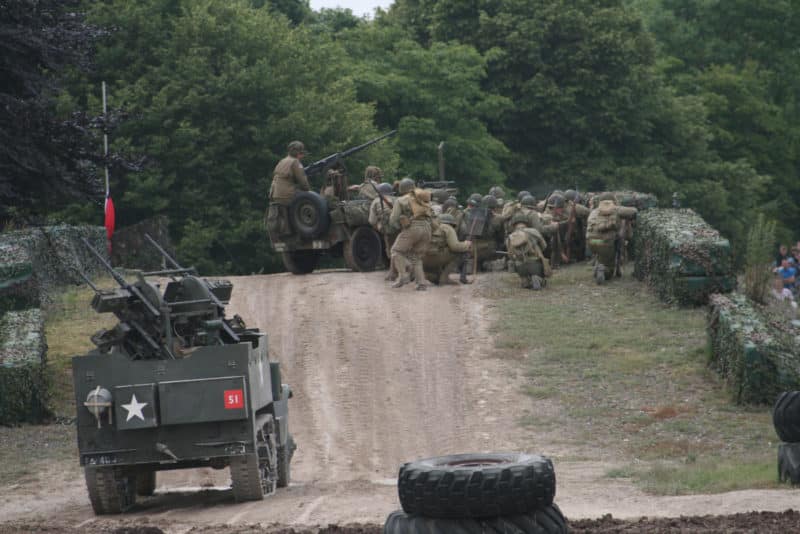My Caribbean project continues with the addition of a set of Cuban Chasseurs with dogs to my collection. These troops, or more accurately mercenaries, were brought across from Cuba by the various combatants in the Caribbean to fight against the rebellions and revolts taking place. The British imported these mercenaries specifically to suppress the Maroon rebellion on Jamaica but I understand that they were also used on Haiti. My references have come from an account in an book by Robert Charles Dallas written in 1803, ‘The History of the Maroons’ that I found online. As well as describing the Cuban Chasseurs, he gives an account of the brutal training regime inflicted on the dogs and how they were used.

Reference: The History of the Maroons.
In 1795 the second Maroon rebellion took place and despite being faced by some 5000 British soldiers and militia, the Maroons held their own and fierce guerrilla warfare led to a stalemate. It is claimed that the introduction of the Cuban Chasseurs and their dogs broke this stalemate and ended the rebellion.

Chasseur and Cuba Bloodhounds
The dogs have been described variously as a cross between Lurchers and Bloodhounds, although it is possible that they were a variety of Great Dane. It could just be that the breed itself wasn’t consistent but it was the training by the Cubans that made the dogs so effective. To paraphrase from the book, ‘These people live with their dogs, from which they are inseperable. At home, the dogs are kept chained and are never unmuzzled but for attack…..The Chasseurs beat their dogs most unmercifully, using the flat side of their machetes. As a result the dogs coat is much harder as is the structure of the dog…’

My understanding is that such dogs were used by the Spanish and French troops as well as the British and the Cuban Chasseurs that trained them were held in high regard. They were most effective at fighting against irregular troops in rough ground and helped to avoid ambush.
Trent Miniatures sell a pack of these ‘troops’ so I wanted to add some of them to my collection.
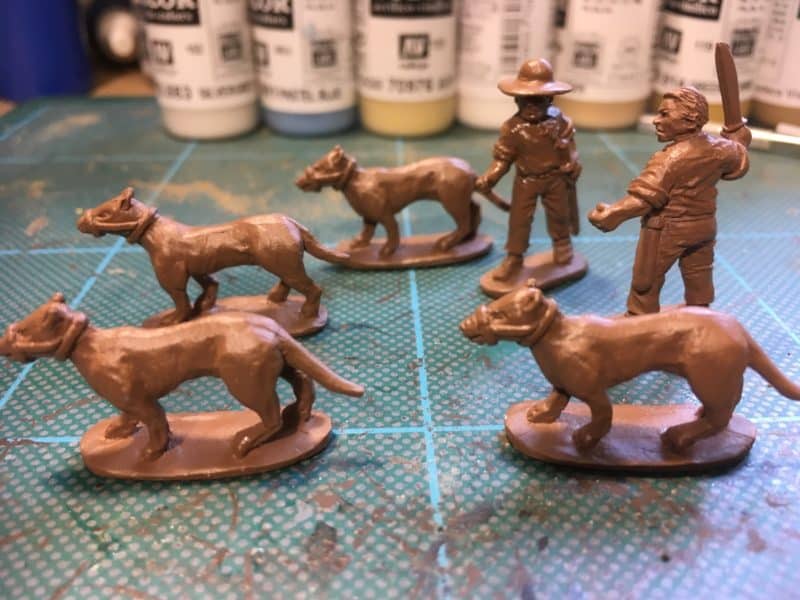
Trent miniatures Cuban Chasseurs
The pack includes two Dog handlers, or Chasseurs and four dogs. As you can see, I’ve cleaned them up and primed them in Army painter Leather brown. Painting was a straight forward task. It is said that the Cubans favoured a red checked shirt, so I have finished one accordingly. Using the picture from the Robert Dallas book as a reference, the other Chasseur is more plainly attired. Similarly, I have gone for a simple finish for the dogs, with one white, one light/orange brown and two Dark Brown.
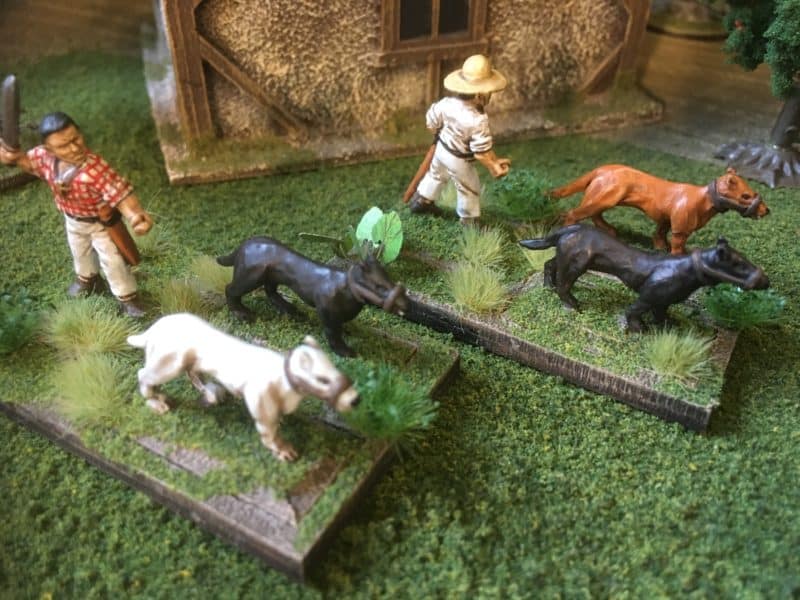
Painted Chasseurs & dogs
The figures are based using a special ‘sabot’ style tray to enable the dogs to be unleashed during wargaming.
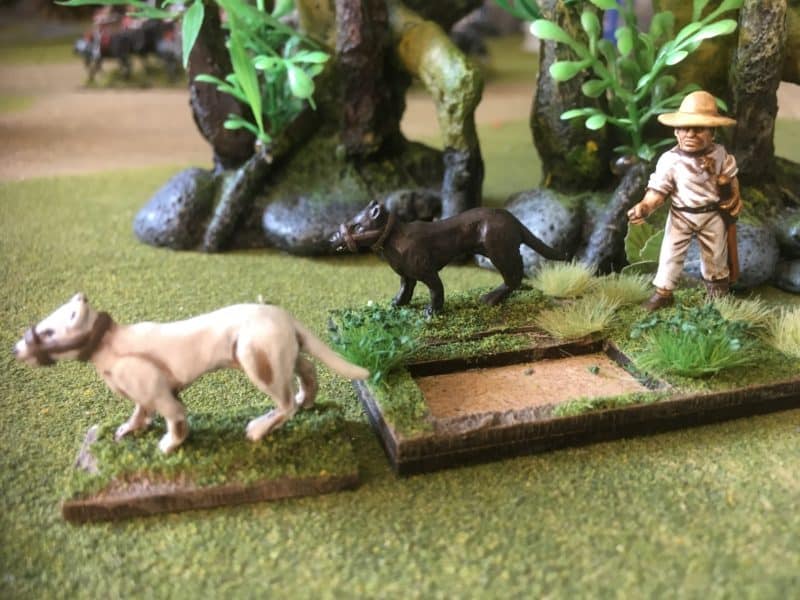
Unleash the dogs!
These bases are not yet available through my shop but if there is sufficient interest, I can have more cut. I finished the bases in my usual style with the Vallejo dark earth texture, woodland scenic scatter and Gamers grass tufts.
I have already used the dogs as a unit in wargaming as I am in the process of developing a set of rules for the Caribbean conflict. We conducted the first play test last week and although much was learnt, there is a long way to go before the rules will be ready.
If you would like to purchase the Cuban Chasseurs and their dogs you can do so by clicking here:
CUBAN CHASSEURS CAR09
Vallejo paints and textures can be found here:
VALLEJO PAINTS
Woodland Scenics Scatter here:
WOODLAND SCENICS
and Gamers grass here:
GAMERS GRASS
All are available post free at the time of writing.

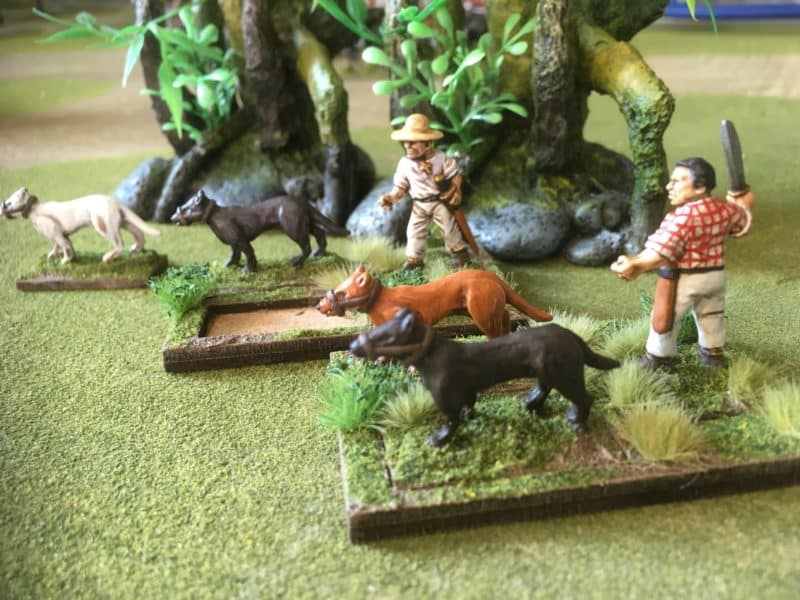

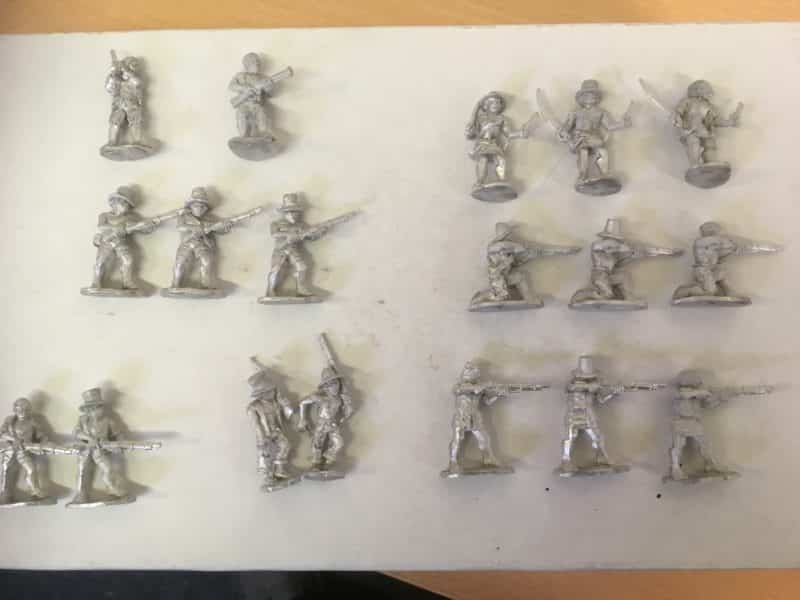
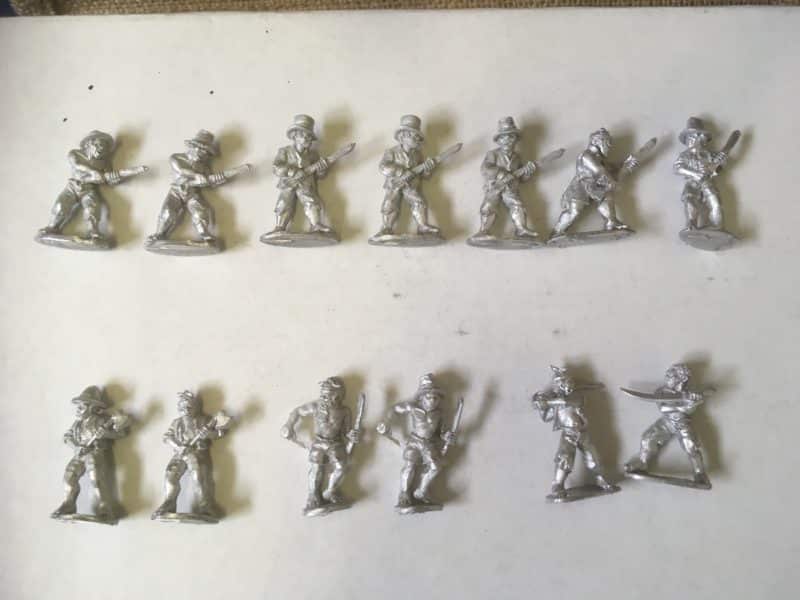
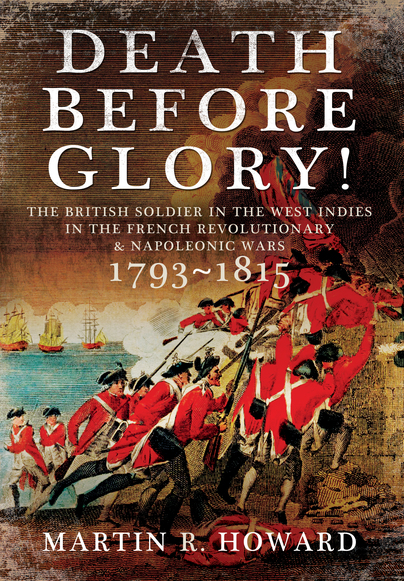 I suspect that the lack of huge set piece battles has meant that the war has not been well documented despite the fact that the stakes were so high. Britain, France and Spain, gained an incredible economic benefit from the area and these Islands were crucial to these countries ability to finance their wars elsewhere. To be clear, most of my little knowledge comes from reading just one book, ‘Death before Glory’ by Martin Howard and some web articles. However, this has been enough to whet my appetite and I am rapidly learning as much as I can whilst continuing to build my forces.
I suspect that the lack of huge set piece battles has meant that the war has not been well documented despite the fact that the stakes were so high. Britain, France and Spain, gained an incredible economic benefit from the area and these Islands were crucial to these countries ability to finance their wars elsewhere. To be clear, most of my little knowledge comes from reading just one book, ‘Death before Glory’ by Martin Howard and some web articles. However, this has been enough to whet my appetite and I am rapidly learning as much as I can whilst continuing to build my forces.